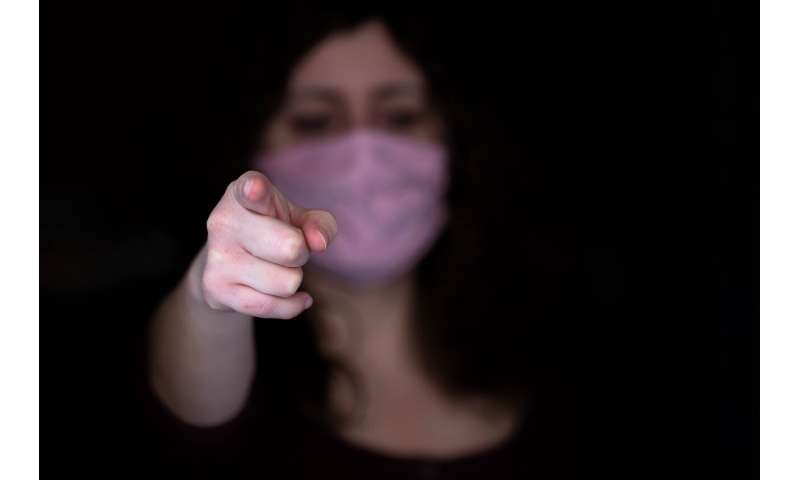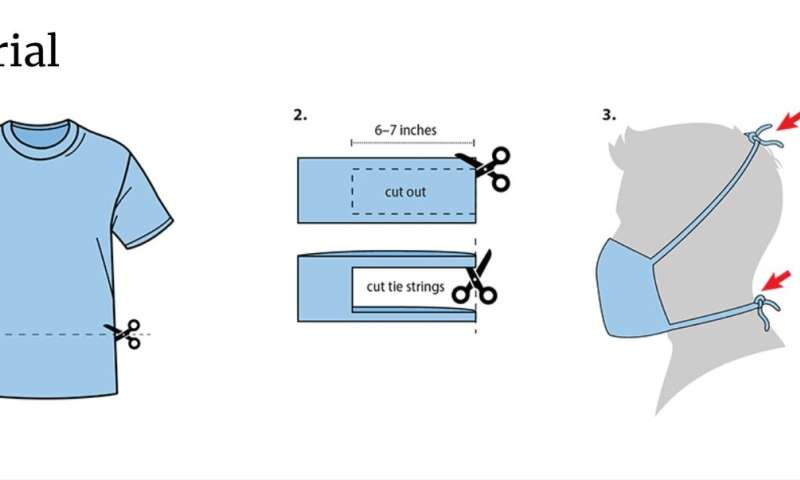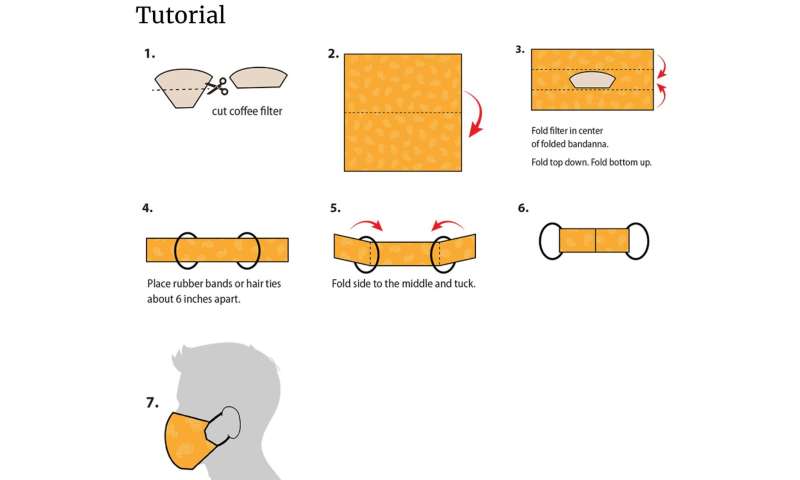
We are living a new normal—learning and working from home, practicing social distancing, and now, wearing non-medical face masks in public. Sporting a brightly colored cloth across his mouth and nose, Gov. Jared Polis made the latest recommendation April 3 in an effort to further combat the spread of the novel coronavirus.
It’s important to know that these face masks are different than surgical or N-95 masks, which must be reserved for health care workers, first responders, and others on the frontlines of the coronavirus pandemic. Non-medical face masks are to be worn for additional protection when traveling outside the house for essential needs, such as groceries or prescriptions. Health experts stress they are not to be used in place of social distancing.
If you’re having trouble finding a non-medical face mask, don’t worry—you can get creative with simple household items.

Cut T-shirt Face Covering (no sewing required)
- Find an old T-shirt.
- Near the bottom, cut a horizontal piece 7—8 inches long.
- Keep the piece of cloth folded and cut out the middle (6—7 inches in length).
- The sides will be used as strings that tie around the neck and over the top of the head.

Bandana Face Covering
- Find a bandana or piece of cloth and coffee filter (if you have one).
- Place the coffee filter in the middle of the bandana or cloth, and fold the top down and bottom up.
- Place two rubber bands or hair ties around the bandana or cloth, about six inches apart.
- Fold the sides to the middle.
- Place the rubber bands or hair ties around each ear.
Fabric Covering (Sewing Required)
- Pick out a piece of fabric, ideally 100% cotton without much stretch. If you don’t have cotton, a pillow case, dishtowel, or thick t-shirt will work.
- Cut two pieces of fabric that are equally sized. They should cover your face from above your nose to under you mouth, ear to ear.
- Sandwich the pieces together and make sure to sew along the hem.
- Fold over the long sides ¼ inch and sew. Then fold the double layer of fabric over ½ inch along the short sides and stitch down.
- Use a needle or bobby pin to thread a 6-inch length of 1/8-inch wide elastic through the wider hem on each side of the mask. Tie a knot. These are the ear loops.
More Tips from the CDC
- Non-medical face masks should fit snugly but comfortably against the face, include multiple layers of fabric, and allow for breathing without restriction.
- They should be washed regularly in a washing machine without damaging or changing the shape.
- Don’t wear your face covering at home.
- Be careful not to touch your eyes, nose, and mouth when removing your face covering.
- Wash hands immediately after removing.
- If you can, have fun with it. Homemade masks are a good DIY project when you’re stuck inside, and they don’t have to be boring!
Source: Read Full Article
